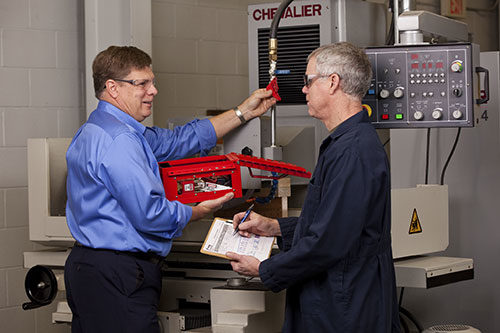Better understanding hazardous energy control
What do I need to know regarding the new ANSI standard Z244.1 (2016), “The Control of Hazardous Energy Lockout, Tagout and Alternative Methods?”

Responding is Todd Grover, global senior manager for applied safety solutions, Master Lock Co. LLC, Milwaukee.
Answer: The expectation that machines are locked out to prevent them from suddenly starting up while people are working on them has been around since the 1980s. OSHA’s 29 CFR 1910.147 standard was heavily based on ANSI’s original Z244.1 Lockout Standard, first published in 1982. The new ANSI/ASSE Z244.1 (2016) standard is a significant expansion of previous lockout best practice guidance. OSHA has provided no definitive updates or substantial changes to the 1910.147 regulation in the more than 25 years it has been in effect. ANSI, on the other hand, has reaffirmed or revised Z244.1 every five years to continuously improve this important safety practice.
The new ANSI Z244.1 standard provides a plain-language approach that describes how a variety of proven energy-control practices can be used by a wide range of industries. The standard addresses the needs of both small and large employers with varying levels of technology in their workplaces. New and expanded information includes:
- Section 5 – Design of Machinery provides guidance on responsibilities of machinery makers to build in integral lockability, provide tamper resistance and use reliable safeguarding technology when reasonable to do so. Machinery builders can increase the value of their product offerings to customers who are looking for safeguards and information to be part of the buying decision. Customers interested in buying new or modified equipment can use Section 5 to prepare bid specifications to ensure equipment is designed to be easily shut down, lockable and ready to be serviced safely.
- Section 6 – The Hazardous Energy Control Program covers the need for a well-thought-out lockout management program, including information on managing change for new or modified machinery and control process documentation.
- Section 7 – Control of Hazardous Energy has been expanded to offer improved lockout procedure development methods and verification of effectiveness by testing. More information is offered on complex group lockout practices and the use of transfer locks. In addition, guidance to more effectively involve contractors with lockout activities is well-detailed.
- Section 8 - Alternative Methods speaks to many task assignments in which energy may need to be present to perform the work. Z244 requires competent evaluation methods to be completed specific to the task being performed to determine the feasibility of applying lockout or justifying dependable alternative methods to lockout.
Lockout needs to be the default protective measure applied for situations in which the task is not well understood or properly assessed for risk. The new standard provides detailed guidance on when, if and how a range of alternative controls could be applied to improve protection for people performing specific tasks.
The ANSI Z244.1 committee believes fatalities or serious injuries related to the sudden release of hazardous energy are completely preventable. The newly revised standard provides the latest information on achieving acceptable levels of risk by knowledgeably applying conventional lockout, tagout or well-determined alternative methods to prevent these avoidable incidents from occurring.
Editor's note: This article represents the independent views of the author and should not be construed as a National Safety Council endorsement.
Post a comment to this article
Safety+Health welcomes comments that promote respectful dialogue. Please stay on topic. Comments that contain personal attacks, profanity or abusive language – or those aggressively promoting products or services – will be removed. We reserve the right to determine which comments violate our comment policy. (Anonymous comments are welcome; merely skip the “name” field in the comment box. An email address is required but will not be included with your comment.)

